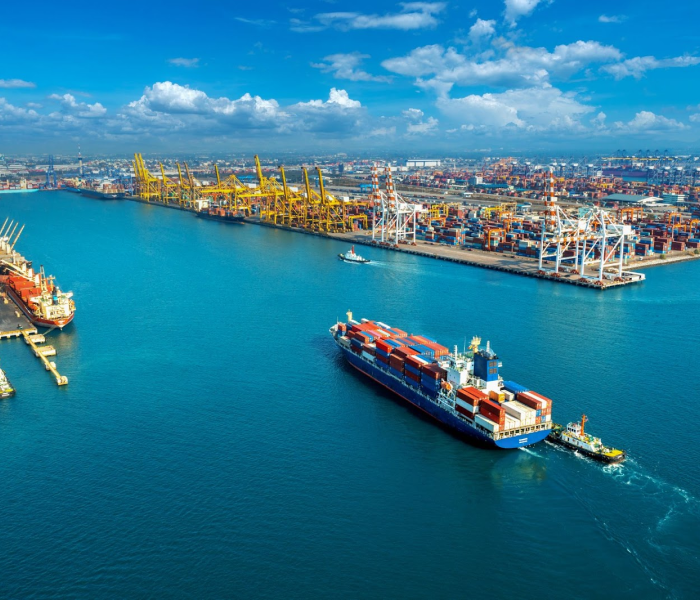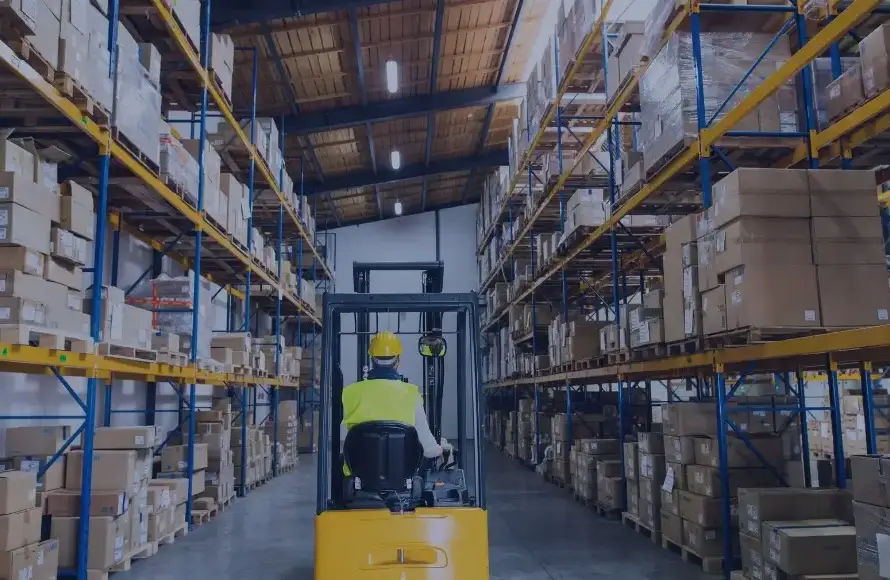Agriculture has always been the foundation of global trade and commerce, providing food, raw materials, and livelihoods for billions of people worldwide. As the world population continues to grow, the demand for agricultural products is steadily increasing, placing immense pressure on supply chains that span the globe. However, while international agricultural trade presents countless opportunities, it also comes with a unique set of challenges that impact both producers and consumers.
In this blog, we’ll explore the complexities of global agricultural supply chains, the challenges they face, and the solutions that businesses, governments, and organizations are exploring to ensure a sustainable, resilient, and efficient agricultural system.
What Are Global Agricultural Supply Chains?
Global agricultural supply chains refer to the network of producers, suppliers, distributors, and retailers involved in the production, processing, and delivery of agricultural products to consumers worldwide. These chains are highly complex, often crossing multiple borders, climates, and regulatory environments. Agricultural products—ranging from raw commodities like wheat, soybeans, and coffee, to processed goods like packaged foods and beverages—are traded globally, with supply chains spanning continents.
Key stages of the agricultural supply chain include:
- Production: The growing of crops or raising of livestock.
- Processing: Transforming raw agricultural products into finished goods (e.g., milling wheat into flour or turning milk into cheese).
- Transportation: Moving goods from farms to processing facilities and from there to global markets.
- Distribution: Delivering products to wholesalers, retailers, or directly to consumers.
- Consumption: The final stage, where consumers purchase and consume agricultural products.
The interconnected nature of these supply chains means that disruptions at any stage, whether from natural disasters, political instability, or supply chain inefficiencies, can have far-reaching consequences.

Key Challenges Facing Global Agricultural Supply Chains
1. Climate Change and Weather Variability
Climate change poses one of the most significant threats to global agricultural supply chains. Extreme weather events, such as droughts, floods, heatwaves, and hurricanes, can severely affect crop yields and disrupt production. Agricultural regions that are heavily reliant on specific weather conditions, such as those growing coffee or cocoa, are particularly vulnerable.
- Crop Failure: Shifting weather patterns can cause droughts in one region while leading to excessive rainfall in another, both of which can impact harvests.
- Impact on Livestock: Unpredictable temperature fluctuations and water shortages can stress livestock, affecting growth rates, reproduction, and milk or egg production.
- Supply Chain Disruptions: Climate-related events can also affect transportation routes and infrastructure, leading to delays in the delivery of goods.
2. Trade Barriers and Protectionism
While globalization has fostered greater trade in agricultural products, protectionist policies and trade barriers remain a significant challenge. Tariffs, quotas, and import/export restrictions can complicate international trade, driving up costs and reducing market access.
- Tariffs: Governments often impose tariffs on imported agricultural products to protect domestic farmers, but these tariffs can increase costs for consumers and disrupt supply chains.
- Non-Tariff Barriers: Regulations related to food safety, labeling, or genetically modified organisms (GMOs) can vary greatly between countries, complicating trade. Some countries may ban imports of certain agricultural products due to perceived risks or concerns about quality.
- Political Instability: Political tensions, such as those seen in trade wars or diplomatic disputes, can result in sudden embargoes or sanctions, making it difficult to move goods across borders.
These barriers can lead to inefficiencies in the agricultural supply chain, as businesses are forced to find alternative routes or markets for their goods.
3. Labor Shortages and Supply Chain Disruptions
Agriculture is one of the most labor-intensive industries globally, and labor shortages—whether due to demographic shifts, migration restrictions, or the COVID-19 pandemic—can cause significant disruptions in production and distribution.
- Farm Labor: Many agricultural industries rely on migrant labor, especially for seasonal work like harvesting fruits and vegetables. Restrictions on migration can lead to a lack of workers, resulting in unharvested crops or delayed planting.
- Transport and Distribution: Trucking shortages, port congestion, and labor strikes can disrupt the transportation of agricultural goods, leading to delays and higher shipping costs.
- Processing Delays: Labor shortages in food processing plants can result in production bottlenecks, leaving goods stuck in warehouses or distribution centers.
These labor-related challenges exacerbate the already complex nature of global agricultural supply chains.
4. Rising Transportation and Fuel Costs
Transportation is one of the most significant costs in agricultural supply chains, particularly for perishable goods that need to be transported quickly to avoid spoilage. Rising fuel prices and supply chain bottlenecks can push up transportation costs, which can ultimately be passed on to consumers.
- Shipping Delays: The COVID-19 pandemic, followed by port congestion and shortages of shipping containers, led to widespread delays in the delivery of goods. This not only disrupts supply chains but also increases costs.
- Impact of Fuel Prices: Fluctuating fuel prices directly impact transportation costs. Agricultural goods, particularly those that need to be shipped long distances (e.g., tropical fruits, grains), are especially vulnerable to these price swings.
As fuel prices continue to rise and shipping disruptions remain a risk, businesses will need to find ways to mitigate these increased transportation costs.
5. Supply Chain Transparency and Traceability
Consumers and businesses alike are increasingly demanding greater transparency in the supply chains of agricultural products. Issues such as food safety, ethical sourcing, and environmental sustainability are all top-of-mind for today’s consumers. However, ensuring full traceability of agricultural products across global supply chains can be difficult.
- Food Safety: Contamination or foodborne illness outbreaks can lead to recalls, loss of consumer trust, and economic losses. Ensuring the traceability of agricultural products from farm to table is critical.
- Ethical Sourcing: Consumers are increasingly concerned about the environmental and social impact of the products they purchase, particularly in industries like coffee, cocoa, and palm oil. Ethical sourcing requires transparency in supply chains to ensure products are produced sustainably and fairly.
- Lack of Data: Many agricultural supply chains still rely on paper-based systems or lack standardized data collection processes, making it difficult to track and verify the journey of products.
Increasing demand for transparency, combined with the complexity of managing supply chains across multiple countries and regions, creates a challenge for businesses to maintain full traceability.

Solutions to Overcome These Challenges
1. Leveraging Technology and Innovation
One of the most promising solutions to the challenges facing agricultural supply chains is the use of technology. Digital tools, data analytics, and automation can help streamline processes, reduce waste, and improve overall efficiency.
- Blockchain for Traceability: Blockchain technology can create immutable, transparent records of agricultural products as they move through the supply chain. This can help ensure food safety, prevent fraud, and provide consumers with information about the origins of their food.
- Artificial Intelligence (AI): AI can help predict crop yields, optimize delivery routes, and improve forecasting, allowing producers and distributors to better manage their operations and reduce waste.
- IoT and Sensors: Internet of Things (IoT) devices and sensors can monitor the condition of crops, livestock, and shipments in real-time, providing valuable data for farmers, processors, and distributors to make informed decisions.
2. Diversifying Sourcing and Production
To reduce reliance on any single source of agricultural goods, businesses can diversify their supply chains by sourcing from multiple countries or regions. This approach can help mitigate the risks posed by climate change, labor shortages, or geopolitical instability.
- Multiple Sourcing: By sourcing from different regions, companies can reduce the risk of supply chain disruptions in the event of crop failures, labor shortages, or geopolitical conflicts.
- Localizing Production: In some cases, businesses may choose to establish production facilities closer to key markets or near major transportation hubs to reduce the impact of long supply chains.
3. Improving Sustainability and Resilience
Building resilience in agricultural supply chains requires focusing on sustainable practices that minimize the impact of climate change and other risks. This can involve:
- Sustainable Farming Practices: Encouraging the use of water-efficient irrigation systems, crop rotation, and organic farming methods to mitigate the impact of climate change.
- Alternative Energy: Investing in renewable energy sources (e.g., solar, wind) to power agricultural operations and reduce reliance on fossil fuels.
- Agroforestry and Reforestation: Integrating trees into agricultural landscapes can help improve soil quality, reduce erosion, and increase biodiversity, making agricultural systems more resilient to climate change.
4. Strengthening Trade Agreements and Reducing Barriers
Governments and international organizations can play a vital role in addressing the challenges of global agricultural supply chains by reducing trade barriers and promoting free trade agreements. By lowering tariffs, simplifying customs procedures, and ensuring access to global markets, governments can help businesses thrive in the international marketplace.
5. Improving Labor Conditions
Addressing labor shortages and improving working conditions is crucial for the long-term sustainability of agricultural supply chains. This includes:
- Investing in Automation: Introducing automation and robotics in certain aspects of agriculture can help offset labor shortages, particularly for repetitive tasks like harvesting.
- Fair Wages and Worker Rights: Ensuring fair wages and improving working conditions for agricultural laborers can help attract and retain workers, especially in seasonal or migrant labor markets.
Conclusion
Global agricultural supply chains face numerous challenges, from climate change and trade barriers to labor shortages and rising transportation costs. However, through technological innovation, diversification, sustainability practices, and more efficient trade policies, businesses can overcome these challenges and build more resilient, transparent, and efficient supply chains. By addressing


